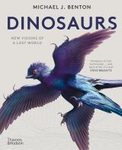Monograph
By: J Wyatt Durham(Author), KE Caster(Author), Harriet Exline(Author), HB Fell(Author), AG Fischer(Author), DL Frizzell(Author), RV Kesling(Author), PM Kier(Author), RV Melville(Author), RC Moore(Author), DL Pawson(Author), Gerhard Regnéll(Author), William Kingdon Spencer(Author), Georges Ubaghs(Author), Carol D Wagner(Author), CW Wright(Author)
695 pages, 534 b/w photos and b/w line drawings
![Treatise on Invertebrate Paleontology, Part U: Volumes 1 & 2: Echinodermata 3 (2-Volume Set) Treatise on Invertebrate Paleontology, Part U: Volumes 1 & 2: Echinodermata 3 (2-Volume Set)]()
Click to have a closer look
About this book
Customer reviews
Related titles
About this book
From the introduction:
"The publication of Treatise Echinodermata 3 in advance of two other volumes allotted to this phylum, respectively numbered 1 and 2, seems anomalous, especially when it is learned that a discussion broadly dealing with characteristics and relationships of echinoderms as a whole has been assigned place at the beginning of Echinodermata 1. Such a chapter is logical as introduction to all others concerned with individual groups however these may be defined and arranged. Accordingly, a comprehensive section entitled "General Fea tures of Echinodermata" has been prepared by Georges Ubaghs, of the Université de Liège.
[...]
At the time many years ago (1948) when the echinoderms were divided into three groups for purposes of the Treatise, the view was accepted that the phylum was divisible into two subphyla based essentially on mode of life-forms prevailingly sessile on one hand and others prevailingly free-moving on the other. These have been named Pelmatozoa and Eleutherozoa, respectively. Pelmatozoans were planned for treatment in Echinodermata 1 and 2, Eleutherozoa in Echinodermata 3. Eleutherozoans were interpreted to include starfishes, ophiuroids, echinoids, and holothuroids, with ophiocistioids as an afterthought.
[...]
Judgment that the division of Echinodermata into subphyla named Pelmatozoa and Eleutherozoa, long accepted in textbooks and various monographic works, is untenable has become firm in the minds of at least several Treatise contributors who are specialists in the study of various echinoderm groups. This conclusion is not new, but to date it has received little attention and is not yet generally accepted. In the Treatise four subphyla are recognized – Homalozoa, Crinozoa, Asterozoa, and Echinozoa. The last two of those named are assigned to the present volume. The asterozoans contain a single class, Stelleroidea, composed of three subclasses, Somasteroidea, Asteroidea, Ophiuroidea; the subphylum is well delimited. The echinozoans are less easily discriminated, though the classes Echinoidea and Holothuroidea unquestionably belong here. The content of Echinozoa is discussed in a chapter by Fell and Moore on "General Features and Relationships" of the subphylum and the inclusion of chapters devoted to Helicoplacoidea (by Durham and K. E. Caster), Edrioasteroidea (by Gerhard Regnell), Ophiocistioidea (by Ubaghs), and Cyclocystoidea (by R. V. Kesling) indicates classification of these groups in Echinozoa."
Customer Reviews
Monograph
By: J Wyatt Durham(Author), KE Caster(Author), Harriet Exline(Author), HB Fell(Author), AG Fischer(Author), DL Frizzell(Author), RV Kesling(Author), PM Kier(Author), RV Melville(Author), RC Moore(Author), DL Pawson(Author), Gerhard Regnéll(Author), William Kingdon Spencer(Author), Georges Ubaghs(Author), Carol D Wagner(Author), CW Wright(Author)
695 pages, 534 b/w photos and b/w line drawings












































